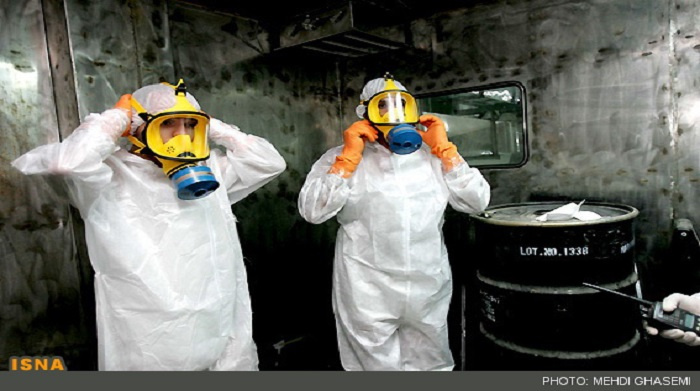Iran’s Enriched Uranium Shipment Confirmed, Numbers Differ

Iran has sent 8.5 tons of low-enriched nuclear material to Russia and received about 140 tons of natural uranium in return, ISNA reported on Monday.
The Russian foreign ministry confirmed the report after Ali Akbar Salehi, head of Iran's Atomic Energy Organization, told ISNA, "The fuel exchange process has taken place."
US Secretary of State John Kerry said on Monday the move was “significant progress” under the July 14 nuclear agreement between Iran and six major powers.
Mark Toner, the US State Department spokesman, described the cargo as a 12.5 ton "combination of forms of low-enriched uranium materials" including 5 and 20 percent enriched uranium, scrap metal, and unfinished fuel plates.
"So that actually constitutes, I think, almost all of Iran's current stockpile of enriched uranium," Toner said.
Iran says enriched uranium swapped with yellowcake was a high-profit deal which added to the country’s strategic stockpile. Iran’s Atomic Energy Agency spokesman, Behrouz Kamalvandi, told ISNA that Iran first received the yellowcake stockpile from Russia before starting to send its enriched uranium to comply with the Supreme Leader’s letter. “Less than 11 tons of enriched atomic material were exchanged with over 200 tons of yellowcake,” he added.
“Unfortunately, some countries try to exaggerate the amount of nuclear material shipped out by using pounds as the measure. But nuclear materials enriched to 3.5 percent and 20 percent and incomplete fabricated fuel plates are calculated based on technical and commercial issues and the international price of nuclear materials,” he said in response to the 25000 lbs (11.3 tons) stated by US officials regarding the shipped materials.
“Uranium price fluctuations over the past one or two months ended up to be profitable for Iran,” Kamalvandi stressed.
“If we wanted to receive yellowcake in return for nuclear materials, we should have received about 70 tons of yellowcake, but from the beginning we only agreed with a deal in which we would receive yellowcake compensating the value of the raw materials and the process to turn it into fuel while we could ask for an equivalent amount of money,” the spokesman said, calling the deal a profitable one considering Iran’s underground uranium stocks.
“A part of the uranium oxide enriched to 20 percent and half-fabricated fuel plates except for the Tehran reactor’s main fuel were exchanged in accordance with the JCPOA and specific technical and commercial calculations were undertaken,” he added.
When asked why the shipment took place from Boushehr instead of the Caspian Sea, he said it was due to safety reasons and a request by the recipient country. “Russians decided on a specific port to receive fuel from Iran. There is no port in the north of the Caspian Sea capable of fuel shipment and it will take six months to pave the way for it,” he reiterated.
IAEA inspectors monitored the shipment process particularly in its final stages, Kamalvandi said.
He went on to comment on the initial measures in the Arak reactor. “We have not started yet but will soon step into the process,” he added.

